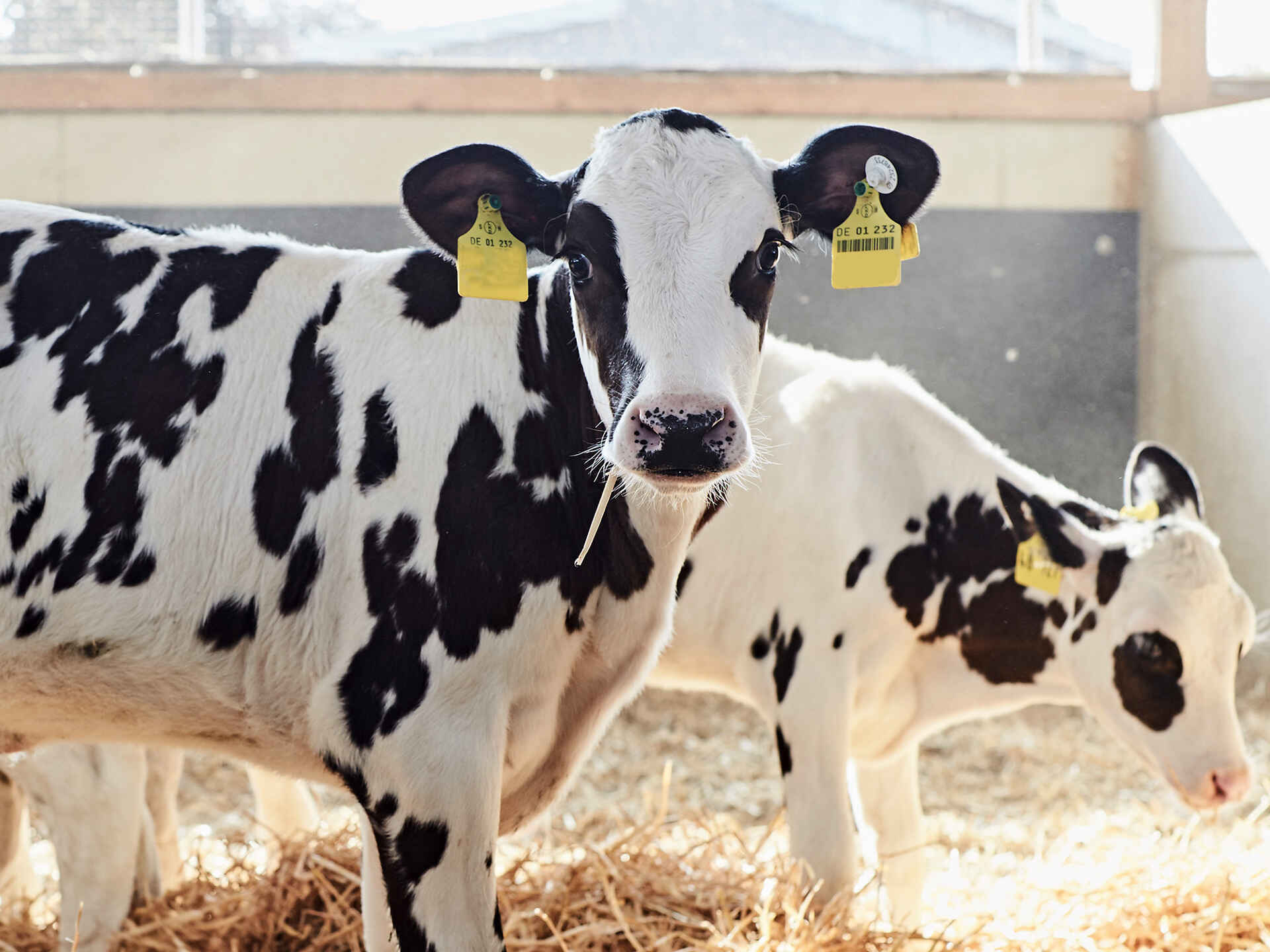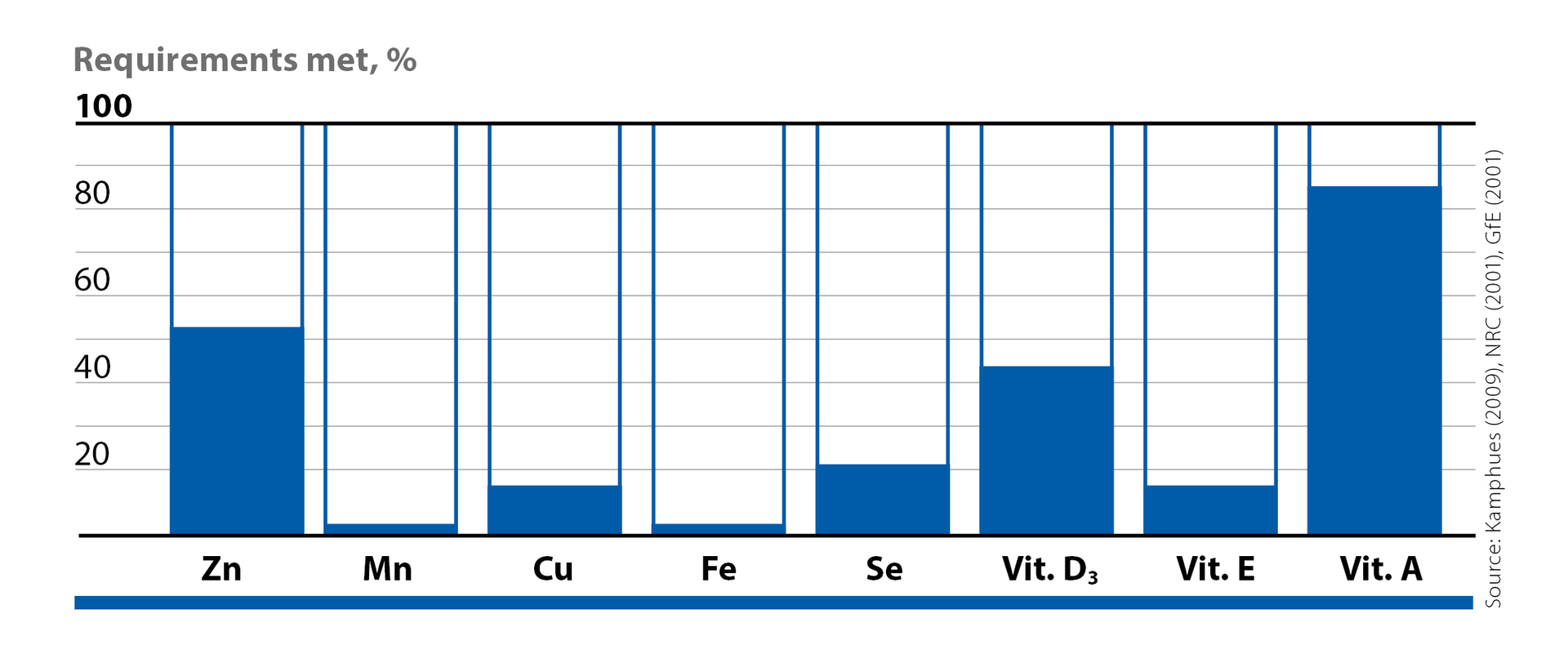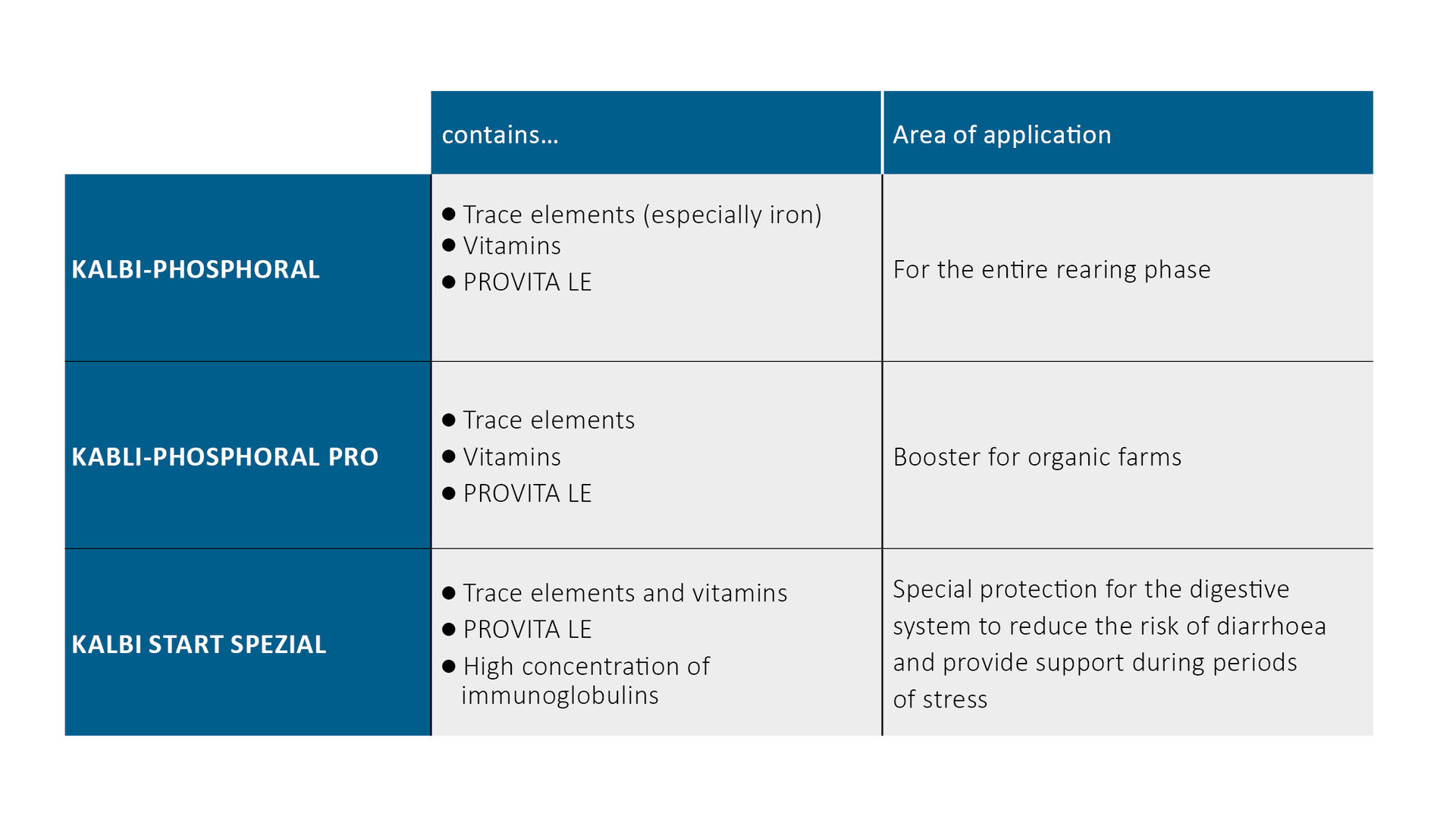
Whole milk feeding – More than just the mother’s milk

Using whole milk forms the basis of calf rearing on many farms. Nevertheless, whole milk feeding is very demanding in terms of management. Feeding 6 litres of whole milk or colostrum per day essentially meets the nutrient requirements of a young calf, however, it does not adequately meet its needs in terms of trace elements and vitamins (see Fig. 1). These need to be supplemented in a targeted manner to avoid drastic deficiency symptoms such as weakened defences and stunted growth.
Growth and health throughout the entire liquid feeding period
It is incredibly important to avoid anaemia in calves, as caused by a lack of iron. A whole milk enrichment tailored to the needs of calves, which in addition to vitamins and trace elements also contains additional active ingredients such as the probiotic PROVITA LE to stabilise digestive processes, boosts growth and promotes heath throughout the entire liquid feeding period. The SCHAUMANN brand offers various specialised products for this purpose (see Fig. 2).
Adapting the use of whole milk
The composition of whole milk, especially the fat content, varies from day to day in liquid feed depending on the proportion of colostrum. These variations in fat content can give rise to cases of diarrhoea. Furthermore, liquid feed management (e.g. using a Milk Taxi) is often difficult when feeding whole milk because the available quantity of milk or colostrum to be used is constantly changing and has to be topped up with milk replacer or milk from the tank.

